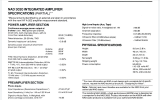Firstly, any decent design, even going back to the 1950s, will meet its specification with components all at the 'wrong' end of their tolerances, as the design will take this into account.
Modern manufacturing, i.e. anything this century, possibly earlier, have components that although may have, say, 5% tolerance of nominal, if from the same batch, will be far closer to each other, typically 1% or better. Consequently, two amplifiers off the same production line with close serial numbers will be pretty much identical. Two amplifiers with distant serial numbers may show differences, but both must still be comfortably within their specification.
As to manufacturer testing, I expect 100% testing of completed PCBs, as this can all be done automatically, so quick and inexpensive. As for testing of completed items, I very much doubt today whether manufacturers routinely do this, possibly for their TOTL products only. How much testing and whether at component, board or finished goods levels depends on the consequences and cost of faults. Scrapping a very expensive PCB could result in testing critical components before board assembly, or if the PCB is cheap, just testing the PCB and scrapping the failures. Similarly, something expensive to rework when finished will get a lot more testing at intermediate stages.
When I first started work, in 1971, manufacturers still occasionally had Goods-In inspection of individual components, but by then, components could generally be relied on to be OK except for military or medical work where 100% Goods-In inspection was still the norm.
With increased reliability of components and automated assembly methods there is reduced need for testing, so manufacturers' Cost Accountants and Production Engineers will work out the optimum amount of testing and where, for an acceptably low failure rate and warranty (and reputational) costs.
S





